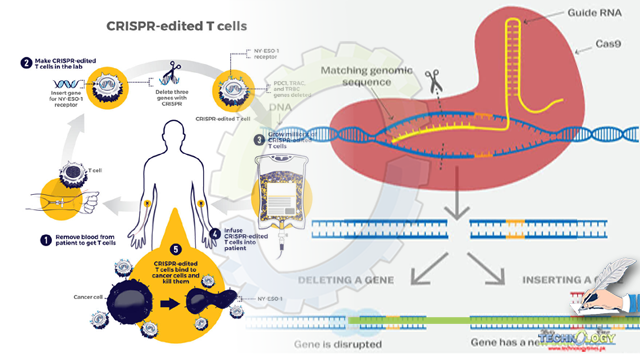The question arises whether a therapy meeting present era standards can be effective enough to cure cancer without leaving side effects? CRISPR is the new ray of hope for genetic engineers.

According to World Health Organization, cancer is the second leading cause of death worldwide, and accounts for an approximate 9.6 million deaths annually.The frequency at which cancer is affecting humans is quite alarming. Over the years, a lot of treatments and therapies have been introduced but all of them leave serious side effects in human body.
The question arises whether a therapy meeting present era standards can be effective enough to cure cancer without leaving side effects? CRISPR is the new ray of hope for genetic engineers.
Being a gene editing tool, genetic engineers are hoping to use CRISPR to remove cancer-causing genes or incorporate healthy ones that could cure cancer.
So, what is basically this thing called CRISPR? CRISPRis a powerful set of molecular scissors more precisely an enzyme that is capable of cutting DNA.This can be employed for cheaper, and more effective gene altering.
Clustered regularly interspaced short palindromic repeats (CRISPR) is RNA mediated defence system. CRISPR is inspired by nature as it is natural defence system of archaea and bacteria.
CRISPR tool has two main components i.e. guide RNA and DNA cutting enzyme, commonly called Cas9. Now mirror image of target DNA is designed that is guide RNA.
This guide RNA along with Cas9 goes to the target DNA. Guide RNA being mirror image of target gene’s DNA matches with it, Cas9 cuts out the target DNA
Through CRISPR, geneticists are becoming more aware of genetic changesthat occur in specific tumors. With this knowledge, researchers are now dealing with cancer patients more efficiently by editing desired genes using CRISPR-Cas9.
Clinical trials are being held to test the potential of CRISPR to treat cancer patients.In Hangzhou Cancer Hospital, the onco-geneticists started treatment with the isolation of immune T cells from the patient.
Employing CRISPR, the cells werereformed to remove the gene thatcodes for a protein PD-1. Next, new reformed cells werereintroduced into the patient with higher efficacy to target cancerous cells.
Till now, 86 cancer patients have been curedby CRISPR in China. Similarly, in April 2018, Edward Stadtmauer, an oncologistand his teamat the University of Pennsylvania, conducted trails to test the feasibility of it.
The teamattached a receptor to the surface of T cells that gavethe T cells the ability to recognize and attack cancer cells. In their trial, instead of addition of genes to the cells, researchers removed genes that they thoughtwould make the T cells more capable of attacking the cancer cells.
After removal of these genes, the researchers used an advanced virus to insert a receptor that guides the T cell to attack an antigen produced by tumor cells. The researchers gave positive results.
Some researchers are cooperating with companies to commercialize CRISPR. But there’s a long way involving experimentation before CRISPR can be used commercially.
As Sir Edward Stadtmauer says “This whole area is just teeming with different ideas’’.it has proven itself to be a potential tool in cancer therapeutics. Over the years, research and trails have proved the efficacy and precision of using CRISPR clinically.
While scientists suggest it is too early to say that CRISPR is the cure to cancer, yet promising results from studies around the world clearly predict that it will surely make its marks a powerful weapon in the fight against cancer in the future.